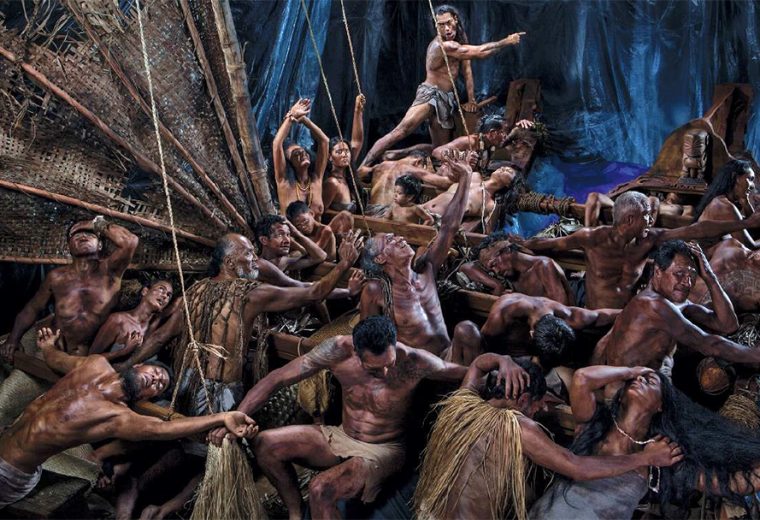Here: Kupe to Cook


A thought-provoking response to Cook’s 1769 voyage to Aotearoa New Zealand at the Australian National Maritime Museum as part of the Encounters 2020 program on June 22
The Australian National Maritime Museum is launching Here: Kupe to Cook, featuring contemporary artworks by 20 leading Aotearoa New Zealand, Pacifica and Australian First Peoples artists who investigate the long and complex histories and legacies of South Pacific voyaging – from Kupe over 1,000 years ago to the arrival of James Cook in 1769.
A free exhibition running from June 22, Here: Kupe to Cook explores the language and art used to tell the stories of these cultural encounters, asking us to reconsider the narratives we have been told and the impact this has had on both New Zealand and Australia.
It is on loan from New Zealand’s Pātaka Art + Museum after a successful debut season. Bringing the exhibition to the National Maritime Museum in Sydney, will enable locals to consider views and perspectives from ‘across the ditch’ through the eyes of their most famous New Zealand contemporary and First Peoples artists.
Kevin Sumption PSM, Director and CEO of the Museum says the exhibit encourages reflection on the narratives of discovery.
“2020 marks 250 years since the arrival of Lieutenant James Cook and the crew of the HMB Endeavour in Australia. Aotearoa New Zealand, like Australia, has earlier encounters and stories to be heard that pre-date Cook. This exhibition, from the Pātaka Art + Museum in Porirua, provides a fascinating view at the long history of Pacific First Nations ocean voyaging. We are very honoured to have it as part of the Museum’s Encounters 2020 program.”
Reuben Friend, Director of the Pātaka Art + Museum states, “Here: Kupe to Cook is an exhibition that dismantles misconceptions about the discovery of Aotearoa New Zealand and the people’s connection to the Pacific Ocean.
“The artworks in this exhibit address this idea of connection, expressing the expansiveness of the ocean and the histories contained within. The artists draw on the artistic and philosophical traditions of their cultures to create visual markers of time and space.”
In this exhibition, Māori sculptors Wi Taepa and Tawhai Rickard have created sculptural interpretations of Kupe’s anchor stone and an imagined version of the Endeavour. Kupe’s anchor stone holds an amazing story. Called Maungaroa it was brought to Aotearoa New Zealand by the great Oceanic navigator Kupe over a thousand years ago. Oral histories recount Kupe sourcing the stone from Rarotonga (in the Cook Islands) and bringing it to Aotearoa on a waka-hourua (double- hulled ship), leaving the anchor on the shore of Porirua Harbour, north of Wellington. It stayed there for many centuries until European-New Zealand soldiers stationed at Patemata Redoubt started chipping pieces off it during the battles with Ngāti Toa forces to acquire Māori land in the 1840s. These soldiers are said to have drowned soon after.
Paintings inspired by Tongan Ngatu barkcloth by Glen Wolfgramm and Dame Robin White celebrate connections between Oceanic communities, while photographs by Samoan artists Yuki Kihara and Greg Semu question the strength of those connections. Artworks from the National Maritime Collection by Bidjara photographic artist Michael Cook and Wiradjuri artist Karla Dickens complement the works brought together by the curators from Pātaka Art + Museum. Both artists challenge assumptions about colonisation and its impact on Indigenous Australians and the history of our nation more broadly. The whole exhibition is a powerful statement about entwined histories of voyaging and their legacies for Aotearoa and Australia.

